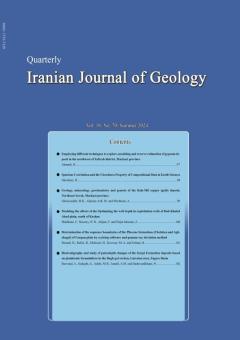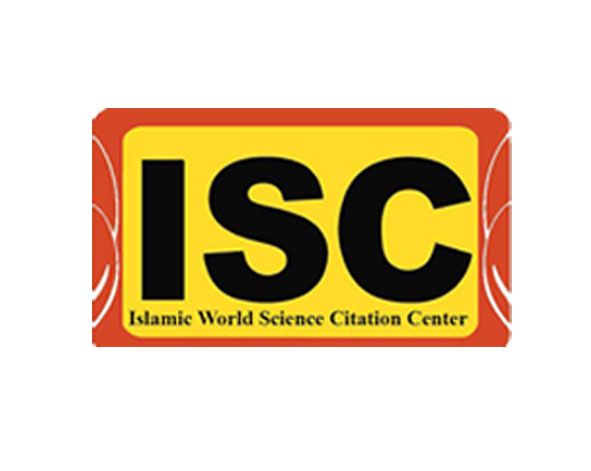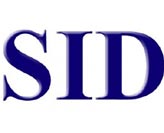About the journal
Iranian Geological Quarterly
Recent Articles
-
Open Access Article
1 - Designing the optimal size of reserve estimation blocks based on different criteria (case study: Mouchesh Zarzima gold deposit)
Reza Ahmadi * ، هانیه شاه زمانیIssue 74 , Vol. 19 , Summer 2027 -
Open Access Article
2 - Selection of Appropriate Zones for Hydraulic Fracturing Operations in the Ilam and Sarvak Formations of an Oil Well in the Southwestern Oil Fields of Iran
Mehran Kalhori * ، S. Gharechelloo ، S. Yasami KhiabaniIssue 74 , Vol. 19 , Summer 2027 -
Open Access Article
3 - Biostratigraphy of the Cretaceous deposits based on Calcareous nannofossils in the Kuhbanan section (northwest Kerman, Central Iran sedimentary basin)
Marziyeh Notghi Moghaddam *Issue 74 , Vol. 19 , Summer 2027 -
Open Access Article
4 - Geochemical Assessment of Arsenic in Water, Soil, and Sediment and Its Bioaccumulation Relationship in Human Hair, Bardsir Area, Urumieh–Dokhtar Magmatic Belt
راحله هاتفی ، farhad Asadian ، zahra boosalik ، batoul janjanehIssue 74 , Vol. 19 , Summer 2027
Most Viewed Articles
-
Open Access Article
1 - The Impacts of the North Tabriz Fault on the quantitative and qualitative characteristics of the neighbor aquifer in the East of Tabriz City, Iran
ebrahim rajabpour ، Abdorreza Vaezi hirIssue 42 , Vol. 11 , Spring 2017 -
Open Access Article
2 - Mineralogy, Geochemistry and Alteration of Ore Minerals in Glojeh Epithermal Veins, North of Zanjan
Majid Ghasemi Siani ، Behzad Mehrabi ، Mohammad khanaziziIssue 42 , Vol. 11 , Spring 2017 -
Open Access Article
3 - Active Tectonics Zonation in Saveh Area, SW Tehran
bijan abdollahi ، Hossein HajialibeigiIssue 49 , Vol. 13 , Spring 2019 -
Open Access Article
4 - Introduction of Mari Copper Deposit as a Stratabound Manto-Type Copper Deposit in Tarom Zone, Northwest of Iran
Mehadi Moradi * ، Sajad Maghfori ، Mohsen Moayyed ، Vahid FaridaslIssue 38 , Vol. 10 , Summer 2016 -
Open Access Article
5 - Tectonic geomorphology approach in the assessment of fold- growth mechanism within the Zagros Fold-Thrust Belt
آرش جمشیدی ، معصومه Vatandoust ، بهنام Oveisi ، علی فقیهIssue 33 , Vol. 9 , Spring 2015 -
Open Access Article
6 - Assessment of interpretation methods to calculate aquifer transmissivity from single-well step drawdown aquifer test
F. Asadian * ، راحله Hatefi ، بهروز اعتباری ، بهزاد Delkhahi ، K. Khodaei ، علی اکبر شهسواریIssue 32 , Vol. 8 , Winter 2015 -
Open Access Article
7 - Ability of Felmann wells to improve the physical and microbial parameters of river water
Mojtaba G.Mahmoodlu ، Mostfa Seyed ، Seyd Mostafa Khezri ، Gholam Abbas Fanaei Kheirabad ، سید محمد سید خادمیIssue 46 , Vol. 12 , Summer 2018 -
Open Access Article
8 - Microfacies, Sedimentary Environment and Sequence Stratigraphy of the Qom Formation, Deh Namak, Northwest of Garmsar
Jahanbakhsh Daneshian ، الهام Asadi Mehmandosti ، yousef ramezaniIssue 41 , Vol. 0 , Spring 2017 -
Open Access Article
9 - Biostratigraphy of the Sarvak and Ilam formations in Abteymoor Oil Field (Wells no. 1 and 14)
Reza Omidi ، Mahmoud Jalali ، Mahboubeh Hooseni-barzi ، Narges AkbariIssue 46 , Vol. 12 , Summer 2018 -
Open Access Article
10 - Synthesis of smart nanoparticles polymer for extraction of phenoxy acid herbicides from water samples
Majid Tashi ، Gholam Abbas Fanaei Kheirabad ، sogol mirzaei ، Mehrdad pakzad ، بهروز Oskooi ، noorbakhsh Mirzaei ، نسیم Heydariyan Dehkordi ، هادی تابانیIssue 36 , Vol. 9 , Winter 2020







